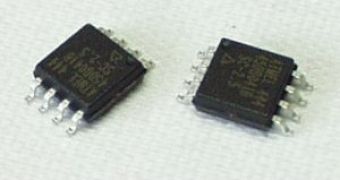Flash memory chips are very popular nowadays as they can be found in almost all electronic devices that are making our lives easier. From the portable music and media players, flash based data sticks, to the solid state drives, NAND chips are expanding their reach. They become very popular due to low overall costs and because they provide users with advantages like resistance, good read and write performance and small form factor.
NAND chips are now found even on the 2.5 inch hard disk drives that are typically found in notebooks, laptops and other mobile computing platforms. In the form of SSDs (short for 'solid state drive') the NAND memory chips are taking over the traditional hard disk drives by increased performance, low power consumption and high endurance. According to Eli Harari, CEO of SanDisk (NAND solution manufacturer and vendor), who was cited by the news site News.com, "The next big market will be video. You should expect next year to see video cameras and video camera phones that use more flash".
Another field where NAND chips are becoming more popular is the main system memory of the computers as the price of flash memories is now well below the manufacturing price for DRAM. The bad news in this story is that NAND chips may have hit a really sturdy brick wall, as the improvements from now on are expected to slow down almost to a halt. "NAND is definitely going to slow down. There are some fundamental practical limits and some fundamental physics limits," Harari said. "We have three or four generations, five at most. Beyond that, we may need a different technology." The problem is that data storing components inside the chips almost reached the limit of miniaturization and the problem of data corruption is looming ever closer, as the smaller are the memory cells, the more unstable they are. "At 32 nanometers, you can't afford to lose more than 30 electrons" before data corruption becomes an elevated risk, he said. "Thirty electrons sounds like a lot, but it is very small."
The alternatives are there, but until now, they have never been fully explored. One such alternative design would be to create chips made of several layers of transistors, stacked one over the other. "When land is expensive, you go up in skyscrapers", Eli Harari said. NAND chips may also end up having more than two memory bits into each cell, even if cells with three and four bits are still at least a few years away.

 14 DAY TRIAL //
14 DAY TRIAL //